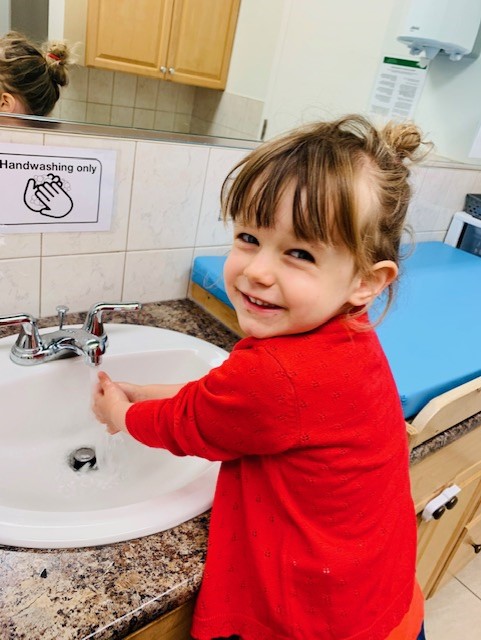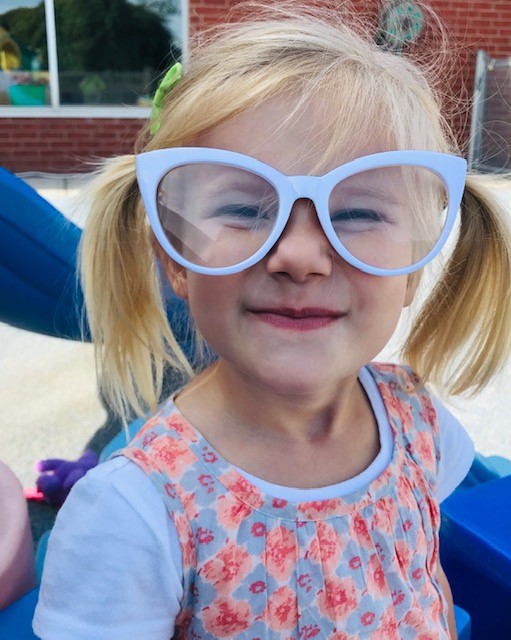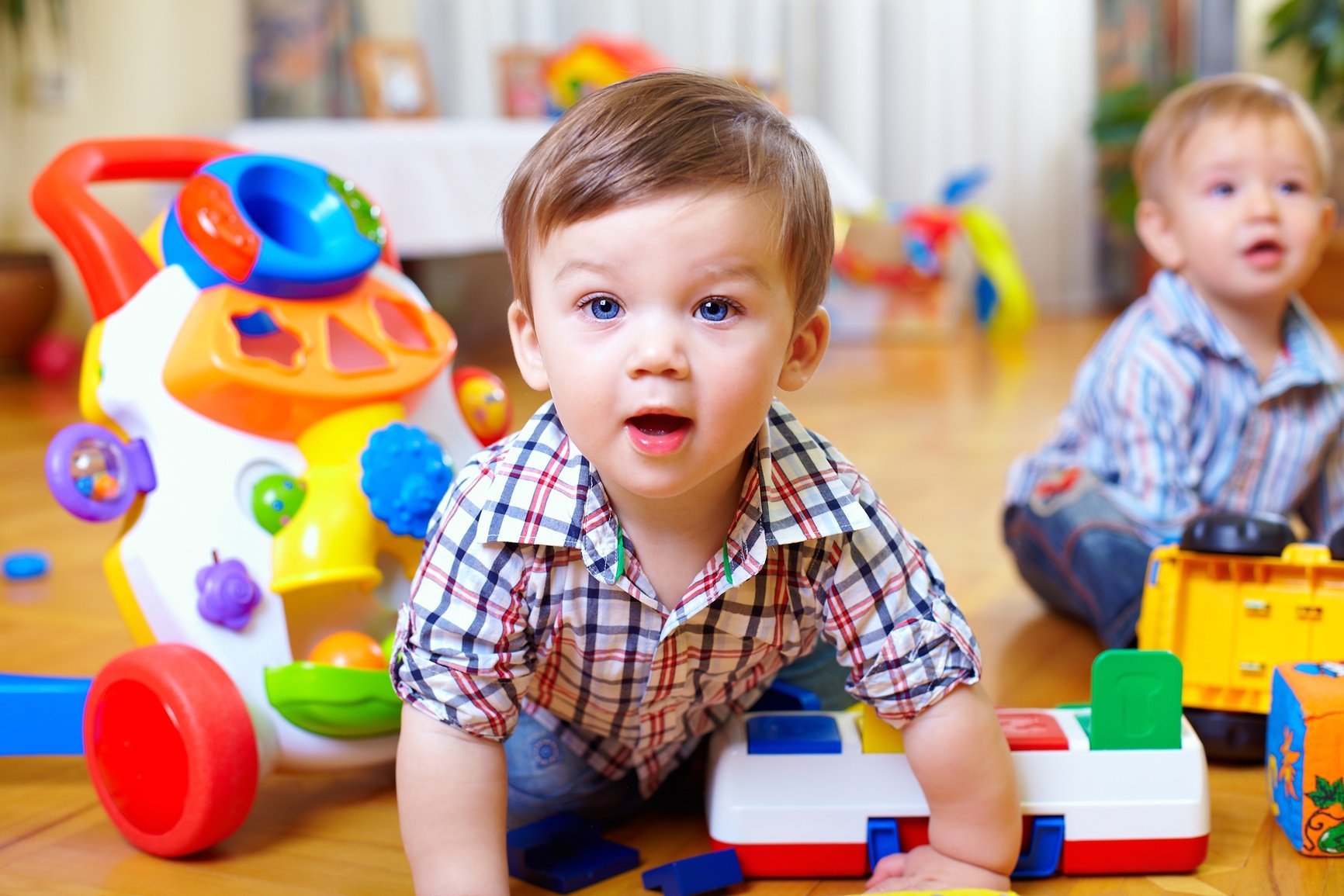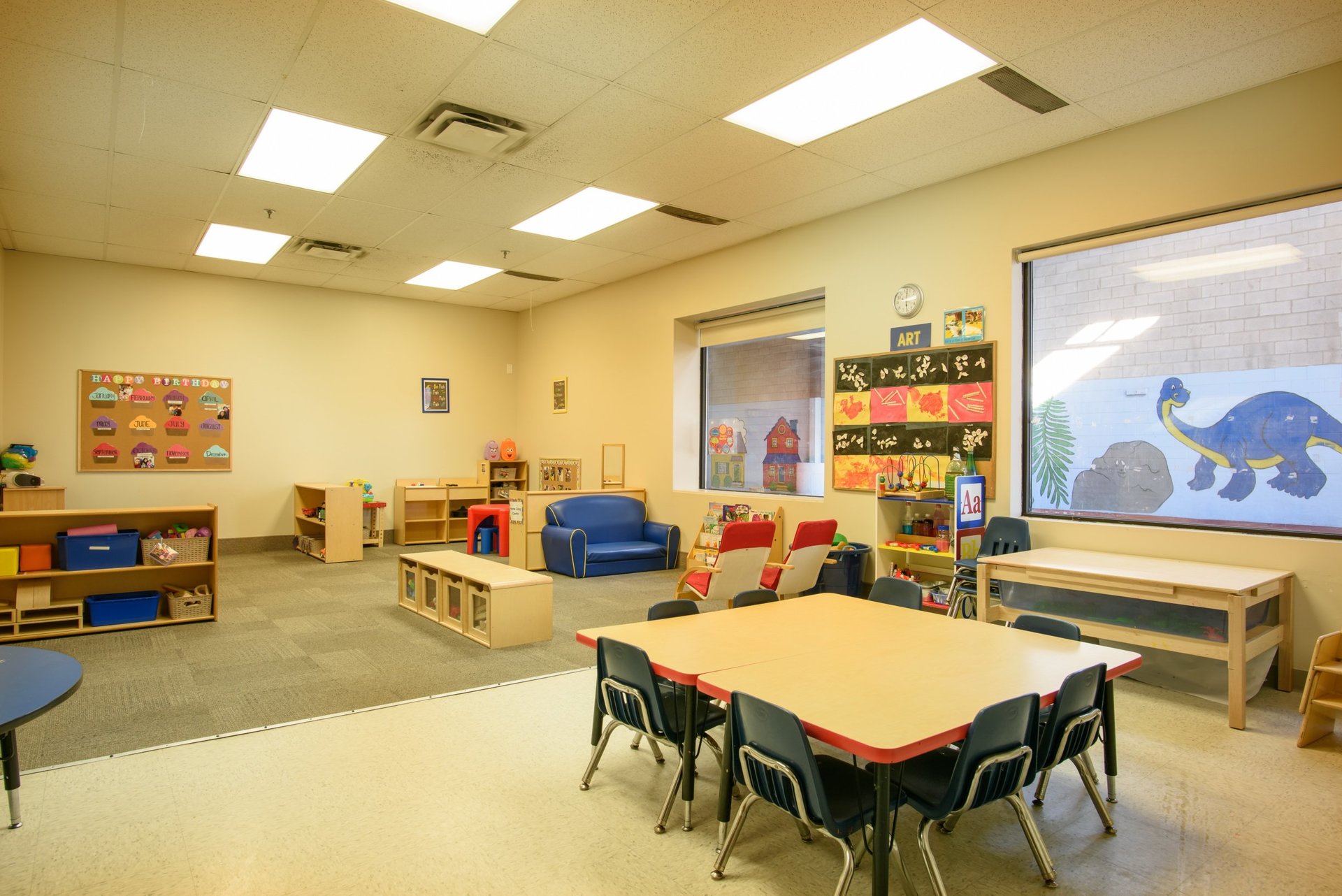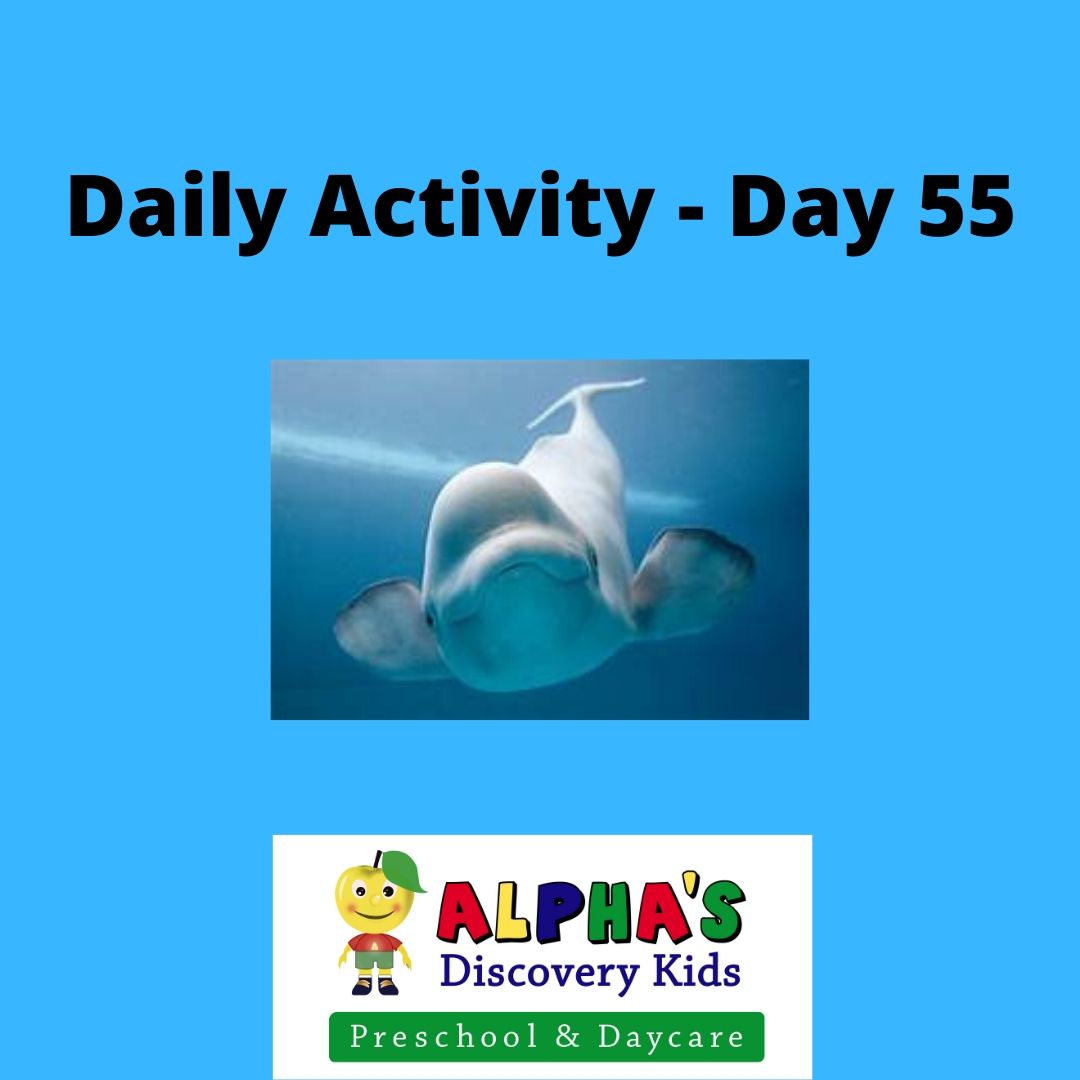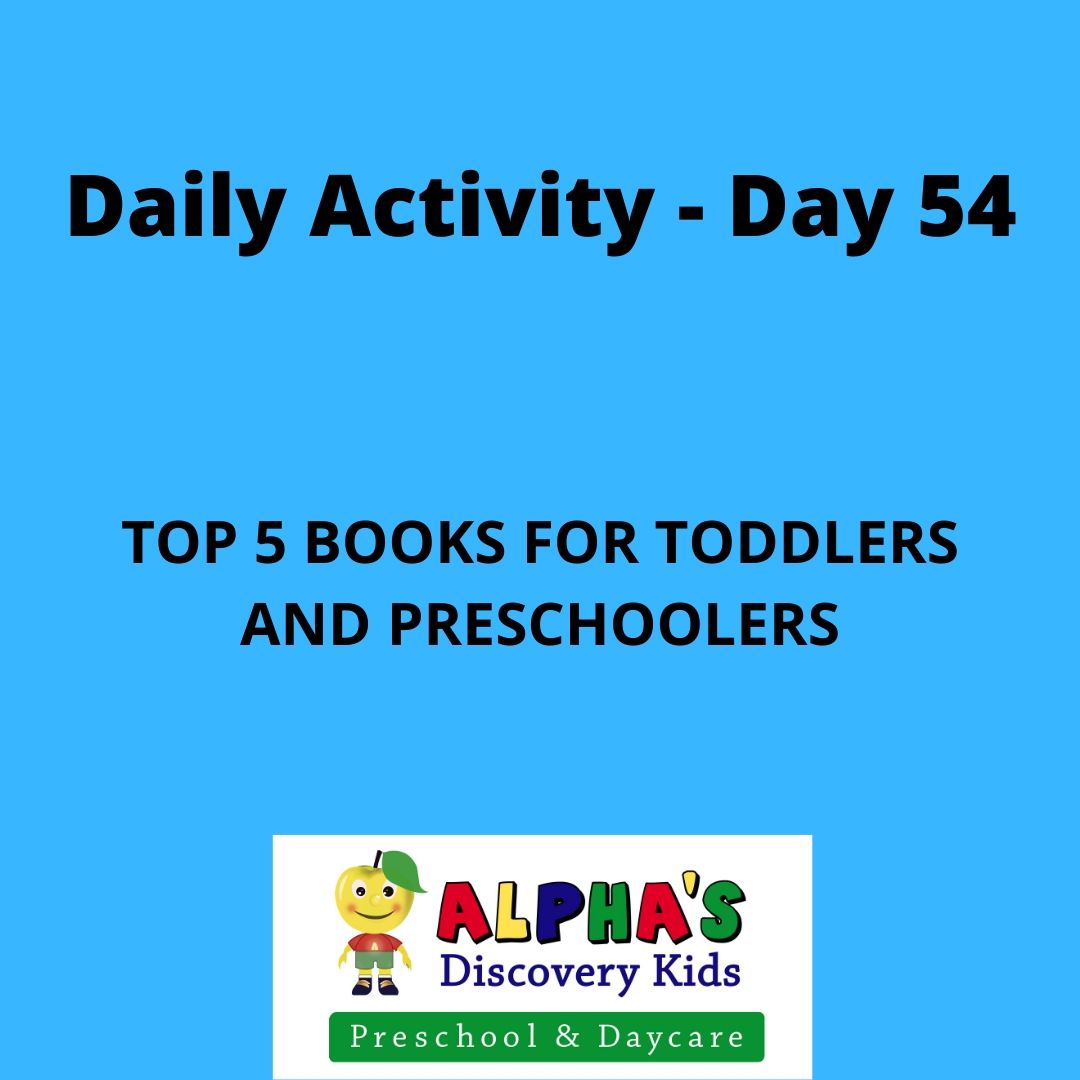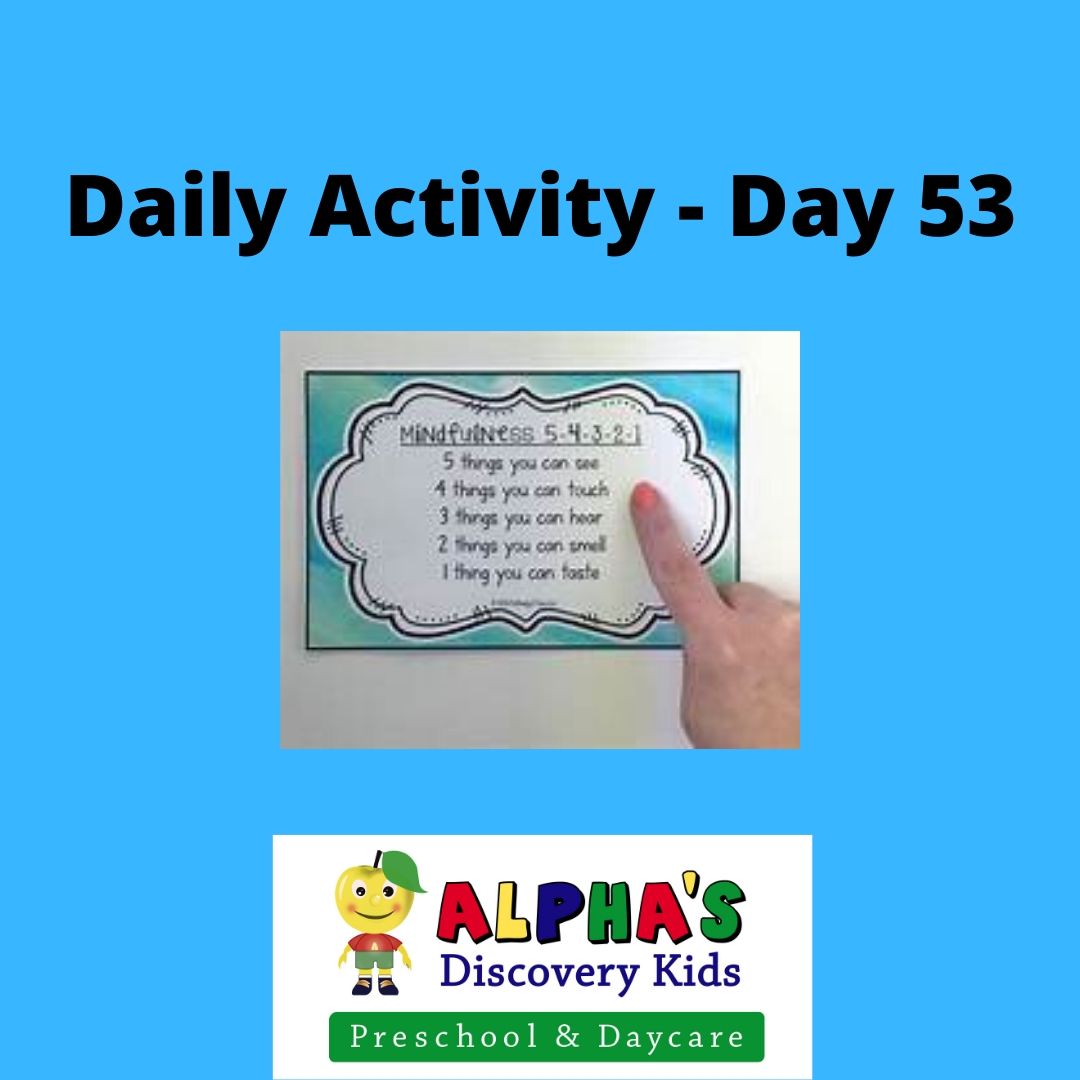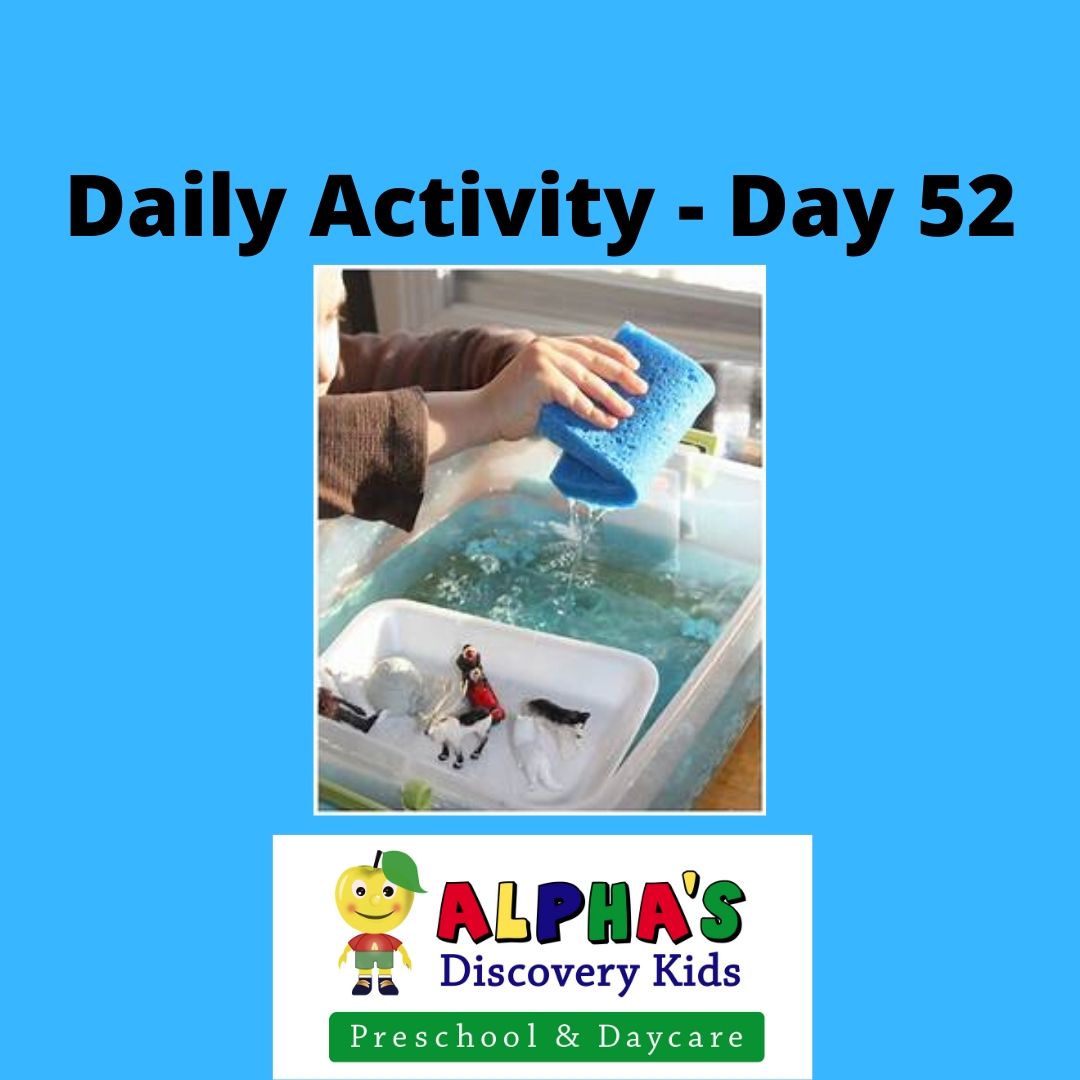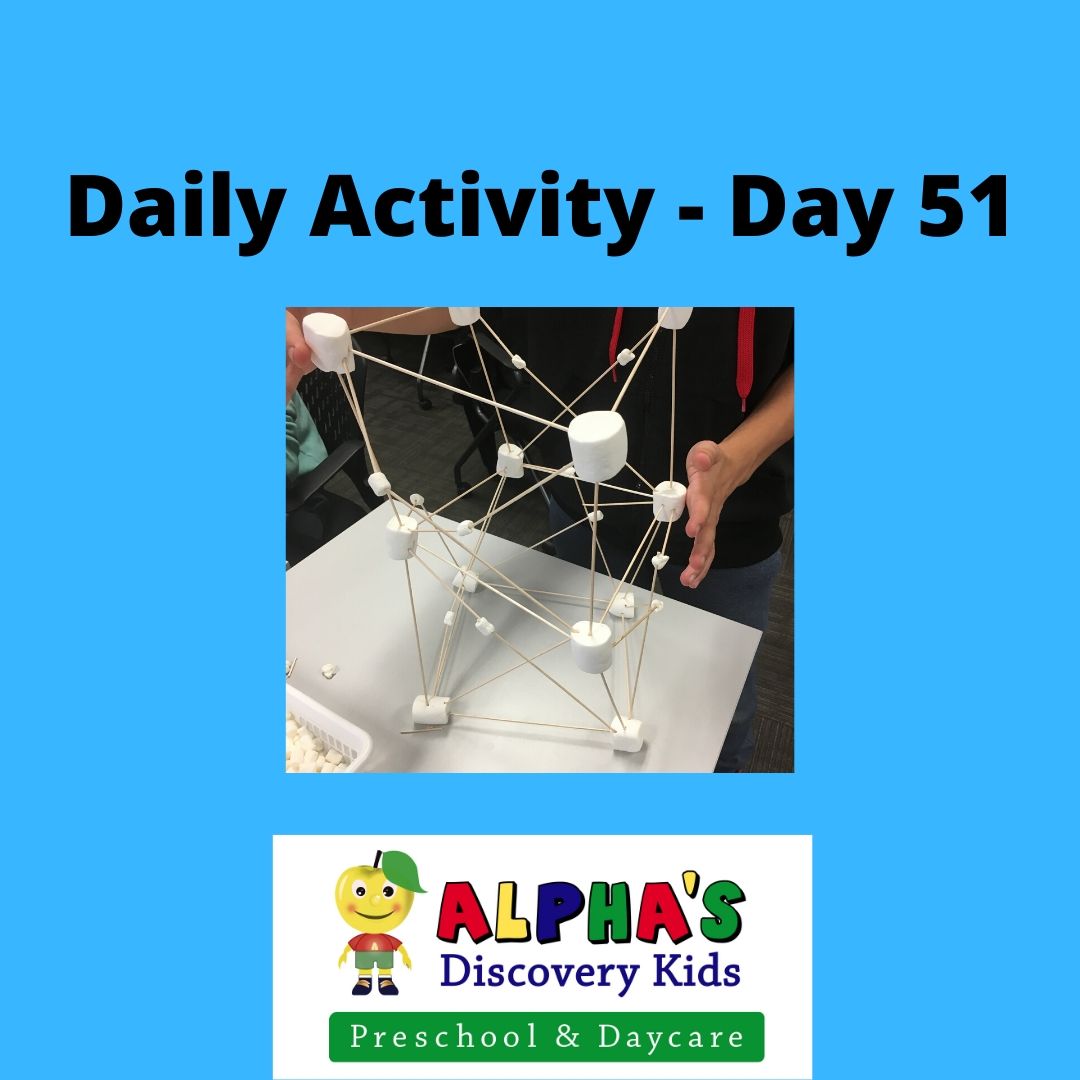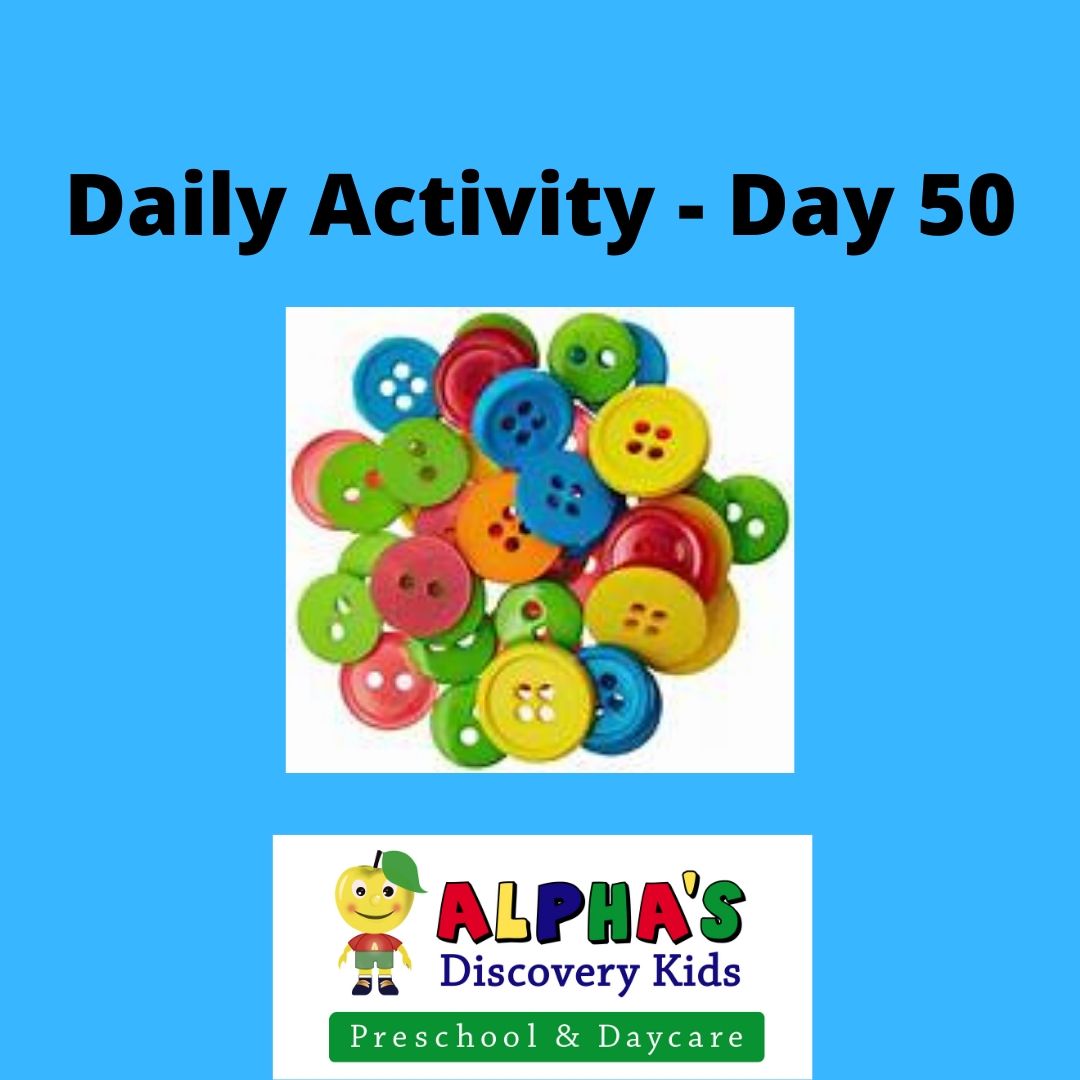Daycare during a Pandemic: What Does Engagement Look Like Now?
Leading up to the days prior to re-opening daycare following the pandemic closure, we all had so many questions and fears of the unknown. As educators, we want to do our best to create an environment that keeps children physically safe and healthy. Parents may have question too because although they may trust their educators and caregivers, the situation is new to all of us. But the question remains for all, how do we provide a safe environment according to the guidelines without creating an institutional feel within the classroom?
What does engagement look like now?
Educators and parents often share many common goals when it comes to children. We all want and strive for their overall health, safety, and well-being both at homes and at school. Considering the pandemic, more emphasis has been placed on physical health for obvious reasons. But now that we have some experience implementing these new health guidelines, we have also gained some confidence to provide a broader sense of well being for each child that extends beyond just the physical well-being.
Social Interactions
After months of being house bound with limited interactions with friends, family and the community, children have now returned to daycare. For many children, this may be the only place they go other than their home. This means that the time spent with educators and peers becomes even more precious. These social interactions are critical to the child’s emotional well-being.
Responsive Educators and Peer Interactions
How do we create a warm and inviting environment for children? Firstly, the presence of a sensitive and responsive educator is the most important part. Secondly, the social interactions between peers play a pivotal role in the child’s environment and their own social development. Children can interact with each other throughout the day within a space that has a limited number of children and that allows for physical distancing during higher risk times (such as sleeping and eating times). Children—especially young children—need quality time with their educators and other peers.
Routines
We create a safe physical and emotional environment by following routines. Routines are so important to a child’s well being. This is something that most children lacked during their time at home during quarantine. Knowing what comes next creates a sense of ease and familiarity each day and this helps to build a child’s confidence.
Creative Approaches to Engagement
Creative approaches to staying connected are important while remaining cautious and safe. A sure-fire recipe for happiness is keeping children engaged. Children need ample time to engage in play and other joyful learning experiences such as exercise, mindfulness, and regular routines for sleeping and eating. It is essential to both children’s emotional and physical well-being.
Verbal and Non-verbal Communication
As educators, we find moments to use powerful words to acknowledge children. These words can convey affection, compassion, and encouragement. We also use eye contact, smiles, hand gestures, signals, and other forms of non-verbal communications to stay connected with the children.
What we know is that creating a sense of belonging, engagement, well-being, and expression creates a foundation for learning.
Early Childhood Educators – THE Most Important Job in the World
Early Childhood Educators – THE Most Important Job in the World
I was once told that being an Early Childhood Educator was THE most important job in the world. I must agree, especially after so many years of seeing the rewards of my hard work. The relationships and bonds you build with the children and families are long lasting and they create an impact for the family and the educator alike. These relationship are often what inspires educators to continue in their chosen field because they feel rewarded and valued. However, this a bold statement to some and not all agree..
It is widely known that Early Childhood Educators are often viewed as “babysitters” and their expertise and knowledge is often undervalued in society. As we engage with children during this pandemic reopening period, I want to remind educators how valuable they are not only to the children and families, but to society in general.
Our Early Childhood Educators put a lot of thought, effort, and genuine passion into their children’s education and well-being each day. This not only has a direct effect on the family but also impacts the economy as well. By simply having child care allows families to work and sustain themselves and their families. Statistics show that parents with a solid support system and quality child care consistently reflect higher levels of productivity in the workplace. During this pandemic, the issue of child care has become paramount as parents and government begin to realize how important it is to a well functioning economy. So perhaps maybe its not as bold of a statement after all?
Studies conducted by Dr. Fraser Mustard, who established the institute of human development, head-start programs and spearheaded the Ontario early years programs, have changed the world or at least changed a few minds. I was fortunate to be able to see him speak in 1999 and was profoundly moved by his research and body of work. Many of his studies helped gain the financial backing and convince government that early childhood intervention and education was crucial to the economy.
He conducted a study that followed two groups of children over a 27-year period. One group had early childhood interventions, parent supports and educational opportunities starting at birth. The other group had less opportunity, advantages, and resources such as early childhood education. This research indicated that the first group not only achieved higher levels of success in their academics, but showed to be in long term committed relationships, and were self sufficient with established careers in their adulthood. The second group showed lower levels of success across the board as well as having significant drains on the economy and social systems.
https://www.oasw.org/Public/SocialWorkNow/A_Bold_Answer_to_an_Unmet_Need_in_Child_Development.aspx
The 1999 statistics showed that for every dollar directed towards early childhood development resulted in nine dollars saved in tax dollars for public welfare, health care, rehabilitation, and correctional institutional costs.
As you can see, the benefits of the services provided by Early Childhood Educators far exceeds just meeting the basic needs of a child, these educators are changing the world, one child at a time!
For more information about our programs and services click here.
How Parents Can Prepare their Child to Return to Daycare
How Parents Can Prepare their Child to Return to Daycare
As parents prepare to return to work and as daycare reopens, it is critical that parents prepare their child to return to daycare. With children being away from daycare and routines for months, we know it will be difficult for both parents and children to get back into the routine. We have create some tips to help parents to make the transition as smooth as possible as you get ready to return to daycare.
The week before returning to daycare:
- Talk about your child’s teacher, friends and people they know at school.
- Show pictures of people at the daycare and talk about fun times. You can look at pictures of your child on the HiMama app and any class photos. Ask your child if they remember the names of the people in the pictures.
- Be excited and positive. Try not to show any anxiety or fear about returning to daycare. Even if you may be feeling a little anxious – try to stay positive. Your child will feed off of your emotions.
- Try to use positive language when talking about what you can and can’t do at daycare. For example, instead of saying “don’t touch your friends” , you could say “ We can give air hugs like this“
- Drive by the daycare and stop in front of it. Point out that you will be going back very soon.
- Give them answers to the questions they ask rather then information overload which can make them feel anxious. Sometimes less information is better.
- Show them how to wash their hands well. For 20 seconds and use soap and water.
- Try to follow the daycare schedule routine with wake up time, naps and lunch time.
The day before returning to daycare:
- Tell your child you are excited to go to work and see your own friends (even if you are working from home)
- Pack your backpack with items to bring to daycare.
- Talk about PPE. Show them what a mask looks like and put one on the doll and on yourself. For toddler, play peek-a-boo with the mask.
- Tell them that a teacher will be waiting for them at the door because they are so excited to see them. If possible, let them know that you won’t be going into the classroom.
- Bring in a family photo if you have not already done so (something recent)
- Get a good night’s rest.
First Day Back:
- Keep in close communication with your teacher (messaging)
- Have trust and confidence in your educators – they are there to support you
- IN ALL CASES – Give it some time – you will see that each day will prove to be better.
For more information about what you can expect as daycare re-opens, click here.
What to Expect as Daycare Re-Opens
What to Expect as Daycare Re-Opens
As we get ready to return to daycare at our Oakville and Mississauga locations, we know that the decision to return to daycare is a difficult one for parents. We can truly empathize with parents with respect to dealing with the daily unknowns and fears related to this pandemic. As we start to transition to a new normal, we are providing information about what daycare will look like for you and your child.
The first thing you should know is that we have been working hard over the past several weeks leading up to this announcement to prepare the daycare for a safe opening. We have been deep cleaning, adjusting our processes and procedures and training staff on the new protocols.
In our role as educators of young children, physical distancing from children is not always possible. Therefore will take every precaution with respect to screening, PPE, staff training, cleaning, sanitizing and altering or enhancing existing practices.
What will daycare look like? To start, we will have smaller class sizes (10 people total – 8 kids and 2 teachers) and those 10 people will stay together for the entire day everyday. Screening will be done on each person that enters the facility (both staff and children). This is a key part of the process to ensure that all staff and children are healthy (free from illness symptoms) when they enter the centre, have not travelled and have not been in contact with a sick person to give everyone peace of mind.
With the new classroom size and some creative thinking, we have some ideas to promote individual activities while still allowing interactions between classmates. There will be plenty of space to allow more then 1 child to work in an interest area. We have created some individual bins with art materials and sensory so that children can have their own set of materials to use and minimize high touch items that can not be cleaned as easily. In more high risk situations, such as eating and sleeping, we have created more space between children, water bottles will be separated with a divider tray and all items will be labelled and cleaned daily. We have set up a toy rotation system to allow items to be switched out to provide interest and variety while allowing extra sanitizing each night. Our goal is to provide a safe and happy bubble where children can thrive but parents can rest assured and go about their work day confidently.
You may wonder if children will be able to socialize and be comforted in this environment. The answer is YES! We know that this is a difficult transition for children who have been away from daycare and routines for close to many months. We will comfort them and keep them busy so they are learning and thriving. Children will also be able to interact with their classmates. They will play with their small group of friends and enjoy some much needed social interaction.
As we welcome new families, transitions will look different but we are committed to transitioning both returning and new families with a loving and empathetic approach. We believe that by following all of the precautions, screening and altering our procedure that we can indeed achieve all our goals. We will use our HiMama app to communicate with parents daily and show them pictures, videos and message them about their day to alleviate any concerns and still be informed about what children are learning and how they are doing. We are continuing to smile because we know how important we are to you – we have a big responsibility – we love our job, and the children and families we serve.
We look forward to it getting back into our routine and seeing all the children and parents in the coming days, weeks and months!
Stay safe and know that we are truly in this together. ~ Air Hugs all around!
Daily Activity for Kids – Day 55 – Whale Search Activity
Daily Activity for Kids – Day 55 – Whale Search Activity
During this COVID-19 pandemic, many parents are home with their children and looking for things to do. This is a daily post to give you ideas of fun things to do. It comes from activities that we implement at our daycare centre using our Four Pillars of Learning curriculum. Since we are closed during this time, we are sharing the activity for you to implement in your own home. Enjoy!
Daily Activity for Kids – Whale Search Activity
On a rainy day when you are stuck inside, technology can be used wisely to engage in some learning with your child. This activity involves researching animals that need water to survive. Let’s dive deep into the ocean for an adventure today.
We always want to make sure that the websites we are using are safe for children. When you use the internet to do searches with your kids, use the “kiddle” search engine. Kiddle is child-specific search engine supported by Google, which prevents the appearance of things not suitable for them. www.kiddle.co
National Geographic’s Kids is a great resource for information about all kinds of animals. Today we are going to learn about the Beluga whale. The beluga, or white whale, is one of the smallest species of whale. Their distinctive color and prominent foreheads make them easily identifiable. Visit the website and learn more about the Beluga whale. Find out what he eats, where you can find him and listen to the noises he makes.
This daily kids activity incorporates many learning areas based on our Four Pillars of Learning curriculum including: (STEAM: science, technology) and language and literacy.
Daily Activity for Kids – Day 54 – Top 5 Books for Toddlers and Preschool
Daily Activity for Kids – Day 54 – Top 5 Books for Toddlers and Preschool
During this COVID-19 pandemic, many parents are home with their children and looking for things to do. This is a daily post to give you ideas of fun things to do. It comes from activities that we implement at our daycare centre using our Four Pillars of Learning curriculum. Since we are closed during this time, we are sharing the activity for you to implement in your own home. Enjoy!
Daily Activity for Kids – Top 5 Books for Toddlers and Preschool
Reading books can take us to a world that our imagination can run free in. It allows us to explore the world, to see things different, to feel how someone else might feel. Reading is a time to unplug and spend time together with your young child. Books provide a great teaching opportunity to help children explore the world around them and themselves.
Today we are sharing our list of the top 5 books for young children (both toddlers and preschoolers):
Toddler:
- Brown Bear, Brown Bear, What Do You See? By Bill Martin Jr.
- The Very Hungry Caterpillar by Eric Carle
- Goodnight Moon by Margaret Wise Brown
- I Love you Forever by Robert Munsch
- Chicka Chicka Boom Boom by Bill Martin Jr.
Preschool
- The Paperbag Princess by Robert Munsch
- The Cat in the Hat by Dr. Seuss
- If you Give a Mouse a Cookie by Laura Joffe Numeroff
- Llama Llama Red Pajama by Anna Dewdney
- We’re Going on a Bear Hunt by Michael Rosen
For infants and toddlers, it’s best to get board books which are durable and won’t tear when they handle it. For preschoolers, paperback books are best. Your children will surely love our book recommendations. Enjoy!
This daily kids activity incorporates many learning areas based on our Four Pillars of Learning curriculum including: language and literacy.
Daily Activity for Kids – Day 53 – Five Senses Mindfulness Activity
Daily Activity for Kids – Day 53 – Five Senses Mindfulness Activity
During this COVID-19 pandemic, many parents are home with their children and looking for things to do. This is a daily post to give you ideas of fun things to do. It comes from activities that we implement at our daycare centre using our Four Pillars of Learning curriculum. Since we are closed during this time, we are sharing the activity for you to implement in your own home. Enjoy!
Daily Activity for Kids – Five Senses Mindfulness Activity
Mindfulness is about noticing what’s going on around you and inside you in the present moment. This ability to focus attention on the present moment is a important skill that supports our overall health, well-being, and connection with others. Today’s exercise helps to build mindfulness skills by focusing attention on the five senses. Engaging our senses helps us focus on the present moment. Notice how you and your child are feeling as you begin. Then, together with your child:
- Notice five things that you can see. Look around you. Notice and name five things that you can see.
- Notice four things that you can feel. Tune in to your sense of touch. Notice and describe the texture of four things you can touch.
- Notice three things you can hear. Listen carefully. Notice and name three sounds you hear in your environment.
- Notice two things you can smell. Notice and name two smells you recognize.
- Notice one thing you can taste. Focus and name one thing that you can taste right now. You can take a sip or bite of something, or simply notice the current taste in your mouth.
- How are you and/or your child feeling now? Do you feel more connected to your surroundings and the present moment?
This exercise is great to do if you or your child is feeling anxious. It helps to distract the mind from anxious thoughts and focuses in on what’s happening in the moment.
This daily kids activity incorporates many learning areas based on our Four Pillars of Learning curriculum including: mindfulness.
Daily Activity for Kids – Day 52 – Water Play Activity
Daily Activity for Kids – Day 52 – Water Play Activity
During this COVID-19 pandemic, many parents are home with their children and looking for things to do. This is a daily post to give you ideas of fun things to do. It comes from activities that we implement at our daycare centre using our Four Pillars of Learning curriculum. Since we are closed during this time, we are sharing the activity for you to implement in your own home. Enjoy!
Daily Activity for Kids – Water Play Activity
If you have a little one under 5 years old at home, then you’ve experienced what it’s like to try to keep up with an energetic toddler or preschooler. But did you know that kids this age need three hours of physical activity a day?
Children between 2-4 years old don’t only need a lot of movement, they also need a lot of variety of movement. So while it’s essential to make time for unstructured, active playtime, it’s also important to have access to plenty of fun, simple activities that you know will help them get active and develop skills in a variety of ways.
With the summer heat this week, it’s a great time to engage in water play outdoors. Water play keeps them cool in the heat and also keeps them active – and it’s FUN!
Here’s some options for easy water play that doesn’t involve a swimming pool. It may be awhile before the pools and splash pads are open.
- Car wash: Gather up lots of sponges, provide a tub of soapy water and wash the bikes and riding toys.
- Little people washing station: Gather small face towels and a bucket of soapy water and wash all the baby dolls or action figures.
- Wall painting: Gather sponges and brushes and have your kids throw their sponges on a wall or on a cement surface to make designs. Sponges and brushes can also be used to “paint” walls with water.
- Setup a water sensory table: All you need is a big bin of water and add their favourite toys as well as pail, shovels, strainers and things they can use to scoop and pour.
- Sponge toss: Gather a sponge and a bucket of water and toss the sponge back and forth to each other.
Depending on your child, you may want to put them in a swimsuit or clothes you don’t mind getting wet. And don’t forget the sunscreen!
This daily kids activity incorporates many learning areas based on our Four Pillars of Learning curriculum including: physical activity.
Daily Activity for Kids – Day 51 – Marshmallow Engineering Activity
Daily Activity for Kids – Day 51 – Marshmallow Engineering Activity
During this COVID-19 pandemic, many parents are home with their children and looking for things to do. This is a daily post to give you ideas of fun things to do. It comes from activities that we implement at our daycare centre using our Four Pillars of Learning curriculum. Since we are closed during this time, we are sharing the activity for you to implement in your own home. Enjoy!
Daily Activity for Kids – Marshmallow Engineering Activity
Summer is almost here and it’s almost time for bonfires and roasting marshmallows. But what do you do with all those leftover marshmallows? Marshmallows are a great building material and today’s activity uses marshmallows to build creative structures to develop engineering skills.
Step 1: Gather the following items: marshmallows (various sizes), Toothpicks, craft sticks
Step 2: Put out the materials and ask your child to build a structure with the materials. The child can choose whatever they want to make. You can make suggestions on how to stick the marshmallows together with the sticks, if they need some guidance. I recommend you also build a structure beside them. You can also extend the activity to add more challenge such as asking them to make a bridge or make the tallest structure they can without falling down.
Step 3: Talk about the structure they make and take a photo of it.
This activity is great for any age group. Even teens and adults like it!
This daily kids activity incorporates many learning areas based on our Four Pillars of Learning curriculum including: STEAM (engineering).
Daily Activity for Kids – Day 50 – Button Sorting Art Activity
Daily Activity for Kids – Day 50 – Button Sorting Art Activity
During this COVID-19 pandemic, many parents are home with their children and looking for things to do. This is a daily post to give you ideas of fun things to do. It comes from activities that we implement at our daycare centre using our Four Pillars of Learning curriculum. Since we are closed during this time, we are sharing the activity for you to implement in your own home. Enjoy!
Daily Activity for Kids – Button Sorting Art Activity
Art and math seem like two very different subjects that don’t naturally combine. In this activity, we have combined art and math in a creative way. A simple and fun way to introduce counting and sorting through art is to use buttons.
Step 1: Gather the following items: buttons, paper and glue. Provide your child with a variety of buttons of different shapes and sizes (or other similar objects like beads, etc).
Step 2: Ask the child to sort the buttons by size and/or colour into different containers.
Step 3: Once your child has sorted their buttons, have them add drops of glue where they are going to put them on their paper.
Step 4: Take any button to cover up each dot of glue.
Step 5: The child can count how many of each they had or the can count how many in total.
For older kids, you can create math equations with the buttons to add them together or subtract them. Using buttons is a great way to teach math in a visual way. Combining the art with the math makes it more interesting as well.
This daily kids activity incorporates many learning areas based on our Four Pillars of Learning curriculum including: STEAM (math, art).

